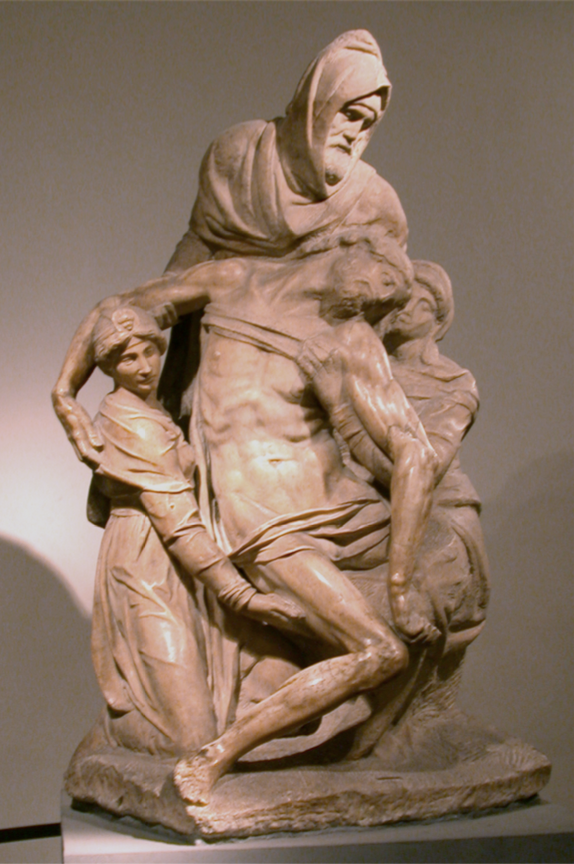In this occasional series, Fine Art Today delves into the world of portraiture, highlighting historical and contemporary examples of superb quality and skill. This week: Michelangelo Buonarroti, “Florentine Pietà.”
Michelangelo carved one of his only self-portraits in what is arguably his last sculpture: the Florentine “Pietà.” The unfinished group displays four figures in a triangular composition. A large, hooded man hovers over a slumping Christ as he supports the martyr’s upper torso. Christ falls into the lap of his mother as another female figure, presumed here to be Mary Magdalene, supports Christ’s right side, as his arm is draped behind her head and resting delicately on her shoulder. The faces of the two female figures are generalized, and they are distinguished from Christ and the hooded male by their smaller size, at the base of the compositional triangle.

The large hooded figure is more specific and individualized from Christ, the Virgin, and Mary Magdalene. Ascanio Condivi, a pupil and assistant of Michelangelo’s, had intimate knowledge of the sculpture’s production and was the first to identify the large hooded figure at the apex of the composition as Nicodemus in his 1552 biography of Michelangelo. Vasari, too, witnessed the production of the group and took the identification further, recognizing the hooded figure as both Nicodemus and Michelangelo in the second, 1568 version of his Lives of the Artists.
As artists advanced in age and began to contemplate more seriously their inevitable deaths, Joseph of Arimathea and Nicodemus were two biblical men they could have easily appropriated to convey piety and intimacy with Christ’s sufferings. In particular, one biblical account of Nicodemus may have had importance to aging artists. In chapter 3 of the Gospel of John, Jesus tells Nicodemus, “No one can see the kingdom of God unless they are born again.” Confused, Nicodemus asks Jesus how men can be born again when they are old, to which Jesus replies, “Very truly I tell you, no one can enter the kingdom of God unless they are born of water and the Spirit. Flesh gives birth to flesh, but the spirit gives birth to spirit.”
It seems likely that Michelangelo was familiar with scripture and possibly these verses. Teachings surrounding the concept of spiritual rebirth may have held significance for sculptors in their last years. The allure of this hypothesis lies in the fact that Baccio Bandinelli (another sculptor who represented himself as Nicodemus) died shortly after the completion of his monument in 1560; Michelangelo kept the Florentine “Pietà” in his studio until his death in 1564.
This article was featured in Fine Art Today, a weekly e-newsletter from Fine Art Connoisseur magazine. To start receiving Fine Art Today for free, click here.







